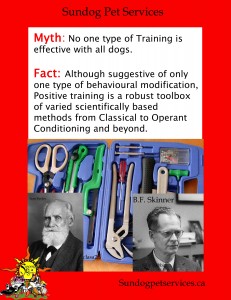Santa Claus and kids
 Imagine you’re a small child. You’ve heard the following all your young life:
Imagine you’re a small child. You’ve heard the following all your young life:
1. Don’t take Candy from Strangers
2. Don’t talk to Strangers
One day you go to the mall. Everything is different; garlands and bells are all over the place. Everything is out of place and weird music blares instead of lulling muzak.
Then… trusted adults urge you to go with a person looking like Peter Pan (that guy steals children!). He/she leads you to a man in obvious disguise – that beard is SO FAKE (and maybe he smells a little like stale cigarettes and/or booze). Then… he offers presents!!!
Your reaction? Much like many other children during their first picture with Santa Claus. Full on crying. This guy is terrifying!
After a year or two, what happens? Mall dressing, and Santa Claus are precursors to what? Some of your favourite things; Grandma and Grandpa coming to visit, the food; or, more likely, boat loads of presents. Santa Claus predicts Christmas. Seeing this man has now turned your feelings from abject terror to the warm fuzzies.
Now you just have to worry about those clowns….
Santa Claus for Dogs
Classical (counter)Conditioning and Desensitization are important in dealing with fear or otherwise upset dogs. Diminishing upsetting emotions often eliminates “bad” behaviour in these dogs. Unlike suppressing the behaviour; akin to smacking a child when they are on Santa’s knee crying. They might stop crying, but isn’t going to make them feel any better about Santa — now Santa may mean abuse, or that fear might transfer to the person who slapped them, or candy, or muzak…..
Fear is hard to eliminate. Time and high magnitude positive associations are required. People with fear of insects are constantly bombarded with insects; kids are only bombarded with Santa Claus once a year. Insects are creepy crawly and icky with no redeeming qualities (don’t bother trying to convince someone afraid of bugs of all their benefits). Santa Claus, although a strange man in disguise tempting children with goodies, brings exactly that – goodies, presents, chocolate and/or family.
To turn garbage trucks into Santa Claus, you could ask the truck to stop and let the dog rummage in the garbage; not a good idea on so many levels. So we play Santa Claus. Distant garbage truck noise and visibility are like decorations; not scary, but present. Close proximity to the garbage truck? Entering the gates of Hades. Rearrange things so noise and visibility means a flow of chicken/steak/stinky cheese starts (Here comes Santa Claus!) — “maybe this thing isn’t so bad if it means a smorgasbord.” Garbage trucks will mean Santa Claus (with enough repetitions and careful timing).
Difficulty of Santa Claus
Simple sits and other basic obedience behaviours could be considered preschool or Kindergarten level (1 or 2 out of 10). Some basic impulse control exercises – stay, wait, leave it – might be grade school. Complex tricks, sports or other activities may be high school or even university level. Dealing with emotions can easily be PhD level (9+ out of 10).
Living with fear can’t be pleasant. Modifying fear is best attempted under the care (or help) of competent, skilled and steady nerved professionals. Make sure your trainer understands how a dogs upsetting emotions may be affecting their behaviour. Fixing the emotion (fear of Santa Claus) can lessen the behaviour (crying).

 lculus is taught, at the earliest, in high school (in Canada). How is calculus taught? In kindergarten (or preschool) we learn numbers, and perhaps to add and subtract (1+1 = ?). By Grade 6 or 7 we’ve learned more complex math; division, multiplication, some algebra, geometry and maybe basic trigonometry (SOH-CAH-TOA anyone?). By Grade 10 or 11, we’ve learned algebra, probably Trig (y=x^2 + 4x + 4; y = sinx). Calculus in Grade 12. Understanding algebra and trig is essential to learning calculus. Hence the slow progression of learning (12 years!!!).
lculus is taught, at the earliest, in high school (in Canada). How is calculus taught? In kindergarten (or preschool) we learn numbers, and perhaps to add and subtract (1+1 = ?). By Grade 6 or 7 we’ve learned more complex math; division, multiplication, some algebra, geometry and maybe basic trigonometry (SOH-CAH-TOA anyone?). By Grade 10 or 11, we’ve learned algebra, probably Trig (y=x^2 + 4x + 4; y = sinx). Calculus in Grade 12. Understanding algebra and trig is essential to learning calculus. Hence the slow progression of learning (12 years!!!).